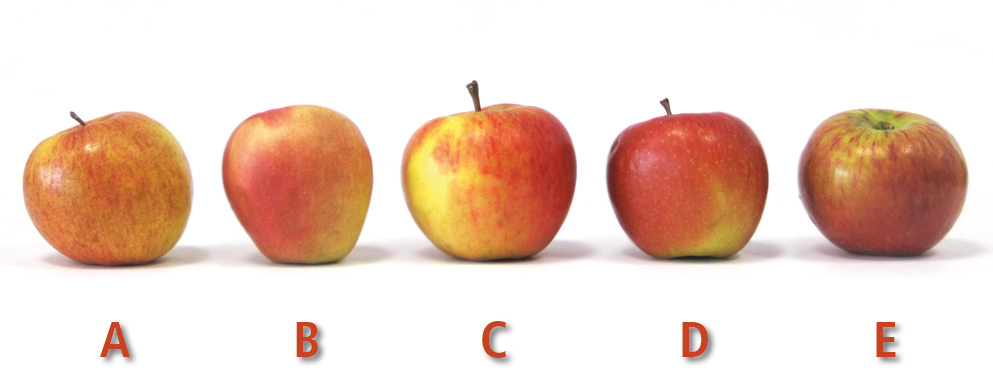Golden Delicious, please proceed to radiology!
Energy dispersive X-ray fluorescence spectroscopy of agricultural products
Apple in Wonderland
»What is an apple like you doing here at the radiologist?«
»I am not just an apple, I am a Golden Delicious.«
»So, why are you here, Golden Delicious?«
»For prevention.«
»Prevention? Against peel cancer perhaps?«
»Although it is none of your business, against bitter pit.«
»And what is that?«
»Brown spots, on the peel and in the flesh underneath.«
»Oh, is that serious?«
»Well, I don’t really care, but human eyes and taste buds do.«
»Why?«
»It is not necessarily recognized as a beauty mark! Also, it makes me taste corky and bitter. You probably have never eaten an apple, have you?«
»And how will radiology be of any help?«
»Scientists have discovered that the tendency to develop bitter pit is related to the calcium concentration. When this is higher than 30 mg/kg everything is fine. When it is lower than 20 mg/kg I am ill. Between 20 and 30 mg/kg, much depends on magnesium and potassium. And this varies from apple to apple.«
»Oh really … and what can the radiologist do for you?«
»He can place me in an analytical instrument and irradiate me weakly while my mineral content is being measured. It’s that simple.«
»And afterwards?«
»Then I can go.«
»Where to?«
»Where to? Onto the retail shelf of course. Because I’m fine …«

 Table 1: FP-measured results of various apples. EDX-720 measuring instrument in standard configuration. All data in mg/kg (resp. ppm). To increase the shelf life of apples during cold storage, they are often sprayed with CaCl2. This explains the high calcium concentration.
Table 1: FP-measured results of various apples. EDX-720 measuring instrument in standard configuration. All data in mg/kg (resp. ppm). To increase the shelf life of apples during cold storage, they are often sprayed with CaCl2. This explains the high calcium concentration.
Apple in real life
Apples count among the healthiest fast foods. Although they do not have any record-breaking nutritional value, they do contain a balanced combination of nutrients. Polyphenols strengthen the immune system and can prevent the development of cardiovascular diseases and cancer.
Stored apples in particular, have a tendency to develop bitter pit. These spots on the peel also spread to the underlying flesh. It turns brown and tastes corky.
The tendency to develop bitter pit is related to the calcium concentration. When higher than 30 mg/ kg (30 ppm), everything is fine. However, at calcium concentrations lower than 20 mg/kg (20 ppm) the occurrence of bitter pit is very likely. At a value between 20-30 ppm, much depends on elements such as magnesium and potassium that are present in apples in concentrations of 25-50 mg/kg (magnesium) and 500-1500 mg/kg (potassium).
The EDX-720 energy dispersive X-ray fluorescence system is a versatile analytical instrument for agricultural science. It can be used for fast and reliable mineral concentration determination of calcium (Ca) and potassium (K) in apples. The measuring range of the instrument ranges from sodium (Na) to uranium (U) and concentrations from just a few ppm up to 100 %.
For the results presented in table 1, standardless FP measurements of the samples in figure 1 were carried out. Measuring time per sample was 200 seconds. The advantage of this measuring method is that no sample pretreatment whatsoever was necessary.
The entire apple was placed in the instrument and measured. After measurement, the apple was intact and could still be sold to consumers. The large sample compartment of 150 x 300 mm also allows measurement of larger fruits.
In addition to fruits, the EDX-720 can be used for testing of soil or fertilizer compositions.